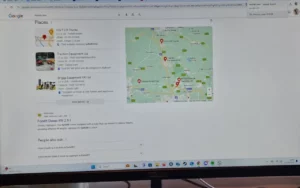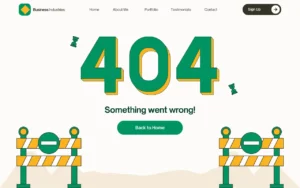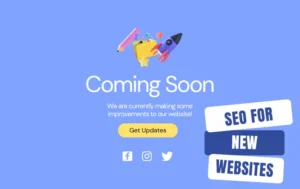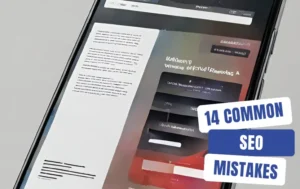
SEO Research Approaches for 2024
Google and other search engines understand that there's a significant difference in what people want to find in search results based on how they search.

Unlocking Hidden Potential: Under-utilised SEO Research Approaches for 2024
In today’s competitive digital landscape, staying ahead in SEO is not just advantageous; it’s essential for business success. As search engine algorithms evolve and competition intensifies, businesses must explore lesser-known research methodologies to gain a competitive edge in 2024. This article aims to delve deep into under-utilised SEO approaches, providing comprehensive insights for business leaders and SEO practitioners. Whether you have a new website or an existing site, this article aims to help you learn to identify opportunities outside of traditional SEO research methods.
Understanding the Current SEO Landscape
Search engine algorithms are dynamic and ever-changing, constantly evolving to deliver more relevant and useful results to users. Keeping pace with these changes is crucial for maintaining visibility and relevance in search engine results pages (SERPs). Additionally, data-driven decision-making has become increasingly important in SEO strategies. By leveraging data insights, businesses can make informed decisions about their SEO tactics, optimising their efforts for maximum impact. With the new version of Google Analytics (GA4), you can connect and review your keywords in GA and see which lead to conversions (valuable events on your website such as submitting a lead form).
How SERPs behave based on Keywords
Google and other search engines understand that there’s a significant difference in what people want to find in search results based on how they search.
For example: “Forklifts” versus “Forklift Hire” versus “Electric Forklifts“.
Search engines understand that broad and generic terms likely contain a mix of different types of people, from students doing research, people trying to find specific answers to questions they don’t yet know how to search for, all the way through to operations managers at a warehouse. Not only are there different types of people searching but even the right people for you are all unique and all at different stages of their customer journey. Meaning, you’ve also got to consider differing intent as someone starting their journey will have very different questions than someone who’s decided to purchase and is trying to find the right provider, price and service.
This is why for broad and generic searches you’ll often see a very mixed search results page. This can include Paid Search ads, Paid Shopping ads, 7 organic search results broken up by Google’s map pack which shows 3 local businesses (which can also include an ad) and People Also Asked, a knowledge panel, videos and images. Amongst all of this, these 7 organic results will likely have a mix of informative sites like Wikipedia or YouTube, national and local companies that sell and rent, manufacturers, service and repairs companies and more. So whilst this broad term might look appealing for having such a large search volume, understanding why is important.

We suggest focusing your SEO strategy and target keywords by considering your customers and what they’ll need on their sales journey and afterwards. Then approach each keyword topically. For each keyword, what could a potential customer be trying to understand? Manually check the search results for each keyword and see what types of content are produced on the current top-ranking pages. How have they built out additional content to support this keyword, are there any links into or out of the pages? What types of content are present, such as: images, drawings, videos, instructions, guides, aftercare advice, etc…
Put yourself in your customer’s shoes, consider interactions with customers and think about issues that you’ve helped them with. Whether this is that you create more in-depth content, or that you consider how the content would flow better or be more easily scanned. Does the page layout and content differ much on a mobile phone?
But, don’t just mimic what others have done well, improve upon it. Try this exercise out yourself and apply this logic to your own keywords. If you’d like help with understanding your SEO keywords, get in touch and we’ll take a look together.
Need help with your SEO research?
Exploring Traditional SEO Research Methods
Traditional SEO research methods, such as keyword research, competitor analysis, and backlink scrutiny, continue to be fundamental pillars of effective SEO strategies.
- Keyword research helps identify the terms and phrases users are searching for, enabling businesses to tailor their content to meet those needs.
- Competitor analysis provides valuable insights into competitor strategies and opportunities for differentiation.
- Backlink analysis helps businesses understand their backlink profile and identify opportunities for building authoritative links.
Identifying Under-utilised SEO Research Approaches
While traditional SEO research methods are essential, there are also lesser-known approaches that businesses can leverage to enhance their SEO performance:
- Semantic SEO analysis: Semantic SEO involves understanding the context and meaning behind search queries, rather than just focusing on keywords. This approach helps businesses create more relevant and valuable content for users.
- User intent research: User intent research involves understanding the underlying motivations and goals of users when they perform a search. By aligning content with user intent, businesses can improve their rankings and provide more meaningful experiences for users.
- SERP feature analysis: SERP features, such as featured snippets, knowledge panels, and local packs, have become increasingly prominent in search results. Analysing and optimising for these features can help businesses increase their visibility and attract more organic traffic.
- Content gap analysis: Content gap analysis involves identifying gaps in competitors’ content and opportunities for creating new, valuable content. By filling these gaps, businesses can improve their relevance and authority in their respective industries.
Semantic SEO Analysis: Leveraging Contextual Understanding
Semantic SEO analysis involves understanding the context and meaning behind search queries, allowing businesses to create content that aligns more closely with user intent. This approach goes beyond traditional keyword optimization, focusing instead on providing valuable and relevant content that addresses the needs of users. Techniques for conducting semantic SEO analysis include:
- Semantic keyword research: Identifying related terms and concepts that are relevant to a particular topic or keyword.
Entity-based optimisation: Optimising content around entities, such as people, places, and things, to improve relevance and context. - Natural language processing tools: Leveraging tools and technologies that can analyse and interpret natural language text, helping businesses understand the nuances of user queries and preferences.
User Intent Research: Meeting Searcher Needs
Understanding user intent is critical for creating content that resonates with users and satisfies their needs. User intent research involves analysing search queries, studying user behaviour on SERPs, and utilising advanced tools to gain insights into user motivations and preferences. By aligning content with user intent, businesses can improve their rankings, increase engagement, and drive conversions. Techniques for conducting user intent research include:
- Analysing search query intent: Categorising search queries based on their underlying intent, such as informational, navigational, or transactional.
- Studying user behaviour on SERPs: Analysing click-through rates, dwell time, and other metrics to understand how users interact with search results.
- Utilising intent analysis tools: Leveraging tools and technologies that can analyse search queries and user behaviour to identify patterns and trends.
SERP Feature Analysis: Optimising for Enhanced Visibility
SERP features, such as featured snippets, knowledge panels, and local packs, have become increasingly prominent in search results, often appearing above organic search results. Optimising these features can help businesses increase their visibility and attract more organic traffic. Strategies for analysing and optimising for SERP features include:
- Featured snippets: Creating content that answers common questions or provides concise summaries of information to increase the likelihood of being featured in a snippet.
- Knowledge panels: Optimising business information and data markup to increase the chances of appearing in a knowledge panel for relevant searches.
- Local packs: Optimising Google My Business listings and local SEO efforts to improve visibility in local search results.
Content Gap Analysis: Identifying Opportunities for Growth
Content gap analysis involves identifying gaps in competitors’ content and opportunities for creating new, valuable content that fills those gaps. By conducting content gap analysis, businesses can identify topics and themes that are underserved in their industry and develop content that addresses those needs. Techniques for conducting content gap analysis include:
- Competitor content analysis: Analysing competitors’ content to identify gaps and opportunities for differentiation.
- Keyword gap analysis: This method identifies keywords for which competitors are ranking but the business is not, indicating potential opportunities for content creation.
- Topic modelling: Using advanced techniques to analyse and categorise content topics and themes, helping businesses identify gaps and opportunities for content development.
By embracing these under-utilised SEO research approaches, you’re more likely to understand how to create a website with the right approach and will end up creating a resource for your customers which supports them throughout their journey.

Are you looking for a marketing agency to partner with?
You might also like
We explore key signs that your website might be in need of a refresh, going beyond surface-level issues.
Unlocking SEO Success for New Websites Congratulations on the launch of your new website! Now, let's ensure it catches the eye and ranks high on search engines. Search Engine Optimization (SEO) is your key to Read more...
14 Common SEO Mistakes SEO isn't about "Quick Wins", it's about creating a valuable resource to support your customers in every step in the sales funnel, including aftercare. Avoiding common SEO mistakes is crucial for Read more...


